With the short “Ash Week” behind us, we’re plowing ahead into the first full week of Lent Madness 2013. We’ve already seen some nail biters, some controversy, and some bracket-busting upsets. Today we have the first African-American Episcopal priest facing off against the writer of one of the synoptic gospels.
Some have commented over the past few days, especially in light (no pun intended) of Lucy besting John the Baptist, on the insanity of this little online devotional. This is nothing new around here. We often hear “How in the world could saint XX beat saint YY?” Of course the whole notion of saints competing against one another is absurd. But just when you get ready to yank your hair out by the roots, remind yourself that it’s called Lent Madness, after all, not Lent Sanity. We learn about saints, we advocate passionately for those we particularly connect with, we win some, we lose some, and we’re inspired in some way by them all.
As things continue to heat up, don’t forget to tell your friends about Lent Madness via social media, email, or even a phone call — it’s never too late to jump into the fray! Oh, and if you’re looking to find out when your favorite saint is set to square off, check out the Match-Up Calendar courtesy of Bracket Czar Adam Thomas.
Absalom Jones, who would become the first American-born man of African descent to become a priest in the Episcopal Church, was born into slavery in Delaware in 1746. At 16 he was separated from his family and sold to a storekeeper in Philadelphia. Having already taught himself to read as a boy, he learned to write with the help of a clerk in the store and at a night school for blacks run by Quakers.
His owner allowed him to work after hours and keep what he earned. It’s said he often worked until midnight or 1:00 am to raise funds to buy the freedom of his wife, Mary, whom he had married in 1770. Her freedom, attained in 1778, ensured that their children would be free as well. Seven years later, when he was 38 years old, he had saved enough to buy his own freedom.
During that period, while a member of St. George’s Methodist Church, Jones met his lifelong friend, Richard Allen. Their enthusiasm brought in many black members to the interracial congregation. However, in 1786, white members met and voted that black members must be segregated to the upper gallery. The following Sunday Jones and Allen sat down in church, and, according to James Kiefer, “ushers tapped them on the shoulder during the opening prayers, and demanded that they move to the balcony without waiting for the end of the prayer. They walked out, followed by the other black members.”
The following year Jones and Allen founded the Free African Society to help widows, orphans, and assist those who were newly free to adjust to urban life. Jones saw religious life and social action as going hand-in-hand. Members paid dues that helped support the efforts. Other activities included protesting slavery and lobbying for the repeal of the Fugitive Slave Act before Congress. They also founded schools and an insurance company.
In 1792 Jones and Allen established the first black church in Philadelphia, St. Thomas’ African Episcopal Church, and petitioned Bishop William White to allow them to become a parish in the Episcopal Church, having had it with the Methodists. The congregation was admitted to the diocese but banned from participation in Diocesan Convention until 1864, long after its founders’ deaths.
Jones was ordained a deacon in 1795 and a priest in 1802 (though other sources maintain it was in 1804). He was known to be a wonderful orator and an attentive and much-beloved pastor. He died in 1818 at his home in Philadelphia, a free man and treasured child of God.
Collect for Absalom Jones
Set us free, heavenly Father, from every bond of prejudice and fear; that, honoring the steadfast courage of your servant Absalom Jones, we may show forth in our lives the reconciling love and true freedom of the children of God, which you have given us in your Son our Savior Jesus Christ; who lives and reigns with you and the Holy Spirit, one God, now and for ever. Amen.
If Luke the physician had a specialty, it was probably family medicine. Or perhaps ob/gyn. After all, Luke’s gospel is the only one to report on the pregnancy of Elizabeth, as John leapt in her womb, as well as the details of Mary’s pregnancy and Jesus’ birth. Matthew, squeamishly, merely reports that Mary “had borne a son.” Luke includes shepherds, angels, mangers, and swaddling cloths, which he probably understood needed regular changing.
There is some conjecture that Luke was a ship’s doctor since he seems familiar with different cultures and comfortable with travel. He journeyed with Paul and Timothy to Macedonia, remaining at Philippi while Paul carried on to Thessalonica, joining up again as Paul headed back on his way to Jerusalem. Paul sends greetings from “Luke, the beloved physician” to the church at Colossae (Col 4:14). Paul was probably writing this from Rome where he was imprisoned, meaning Luke faithfully provided support and friendship through all of Paul’s travails. When Paul wrote “I have fought the good fight, I have finished the race,” he adds, “Only Luke is with me” (2 Tim. 4:11).
If you thought Paul was the authorial powerhouse in the New Testament, think again. Luke the writer stealthily dominates the New Testament, with his two volume work of Luke-Acts taking up more than 25 percent of the content. It is due to Luke that we know anything at all about the early church beyond Paul’s memos. Among other things (including the stories of Jesus’ birth), Luke gave us the Good Samaritan, the Prodigal Son, the story of Zaccheus, the healing of the bent-over woman, Jesus’ appearance on the road to Emmaus, the arrival of the Holy Spirit on Pentecost, Peter’s ministry to the Gentiles, Saul’s conversion, and Paul’s missionary journeys in narrative form.
In addition, it is due in large part to Luke that we believe God’s love through Jesus Christ transcends race, class, and gender, being a gift to all people. At the beginning of Luke’s gospel when Jesus is presented at the temple, Simeon proclaims him “a Light to enlighten the nations,” and at the beginning of Acts, just before Jesus ascends into heaven, he tells the disciples, “you will be my witnesses in Jerusalem, in all Judea and Samaria, and to the ends of the earth.”
No one knows how Luke died. What are thought to be his remains are buried in Padua, Italy.
In Acts, Peter says, “I truly understand that God shows no partiality, but in every nation anyone who fears him and does what is right is acceptable to him.” Through his writing and ministry, it would seem no one knew that more deeply than Luke.
Collect for Luke
Almighty God, who inspired your servant Luke the physician to declare in the Gospel the love and healing power of your Son: Graciously continue in your Church the same love and power to heal, to the praise and glory of your Name; through your Son Jesus Christ our Lord, who lives and reigns with you, in the unity of the Holy Spirit, one God, now and for ever. Amen.
Vote!
Absalom Jones vs. Luke
- Luke (61%, 2,754 Votes)
- Absalom Jones (39%, 1,788 Votes)
Total Voters: 4,540
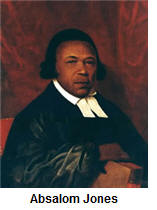

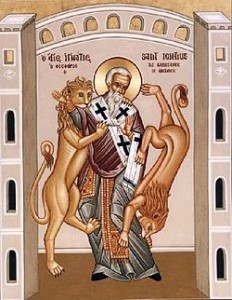
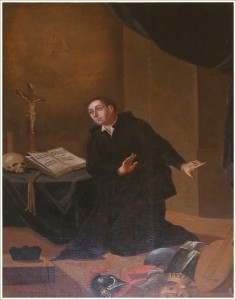


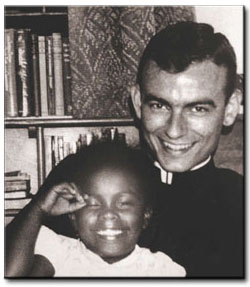


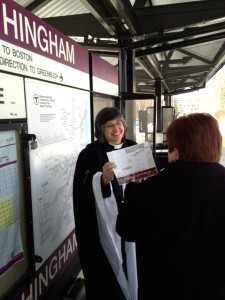










Controversy Interrupts Lent Madness
Presiding Bishop of the Episcopal Church Katharine Jefferts Schori
A bitter controversy has interrupted the first day of the 2013 Saintly Smackdown. It has nothing to do with voter fraud or inappropriate trash talking or over-the-top snark (if that even exists). This has all been sparked by a mug. Or shall we say the lack thereof?
It seems that, while the self-appointed members of the Lent Madness Supreme Executive Committee have agreed to a seasonal détente, Tim has not yet received his 2013 mug. While everyone else who ordered one in a timely fashion is now waking up to vote while sipping coffee out of their fancy new Lent Madness mug, Tim has had to resort to last year’s edition. Or his Baltimore Ravens mug.
The Celebrity Bloggers all seem to have their mugs. In fact David Sibley’s even arrived in Brooklyn during a blizzard. The new mugs are also running rampant at the Episcopal Church Center in New York City where Presiding Bishop Katharine Jefferts Schori has one as does Communications Director Anne Rudig and Public Affairs Officer Neva Rae Fox. And, no, they aren’t just passing the same one around for photo ops. They all have their very own Lent Madness 2013 mugs! (not sure how they tell them apart in the holy kitchenette but that’s not our problem).
Public Affairs Officer Neva Rae Fox is so dedicated to Lent Madness she’s wearing purple nail polish.
To add insult to penitential injury, Tim’s own curate at St. John’s in Hingham, Massachusetts, Anne Emry, has received hers. So far Mug Meister Scott has not commented on the budding controversy.
Protest groups have started picketing the Forward Movement global headquarters in Cincinnati chanting “Free Tim’s Mug!” They have been met with billowing clouds of incense and fire hoses full of holy water.
The Rev. Anne Emry drinking coffee in Tim’s office out of her 2013 mug.
While it’s not yet clear why Tim hasn’t received his mug, other than potential spite, you can order your own from the Lent Madness Store (aka Lentorium). It may not come with a money back guarantee but Scott and Tim personally guarantee that it improves the taste of any beverage (especially freshly roasted coffee from El Salvador). In the meantime, start writing protest songs or start a petition. Scott must be held accountable for this uncharitable act on the first day of Lent Madness 2013.
Communications Director Anne Rudig sporting lots of Lent Madness purple.
Breaking News! We just got word that Celebrity Blogger Chris Yaw has also not received his mug. This is obviously Scott’s retaliation for the only one associated with Lent Madness to have won an Emmy. Put simply: Monday Madness will never win an Emmy. Nominated perhaps, but it will never win one. And that burns Scott up.
Please enjoy your Lent Madness 2013 mug and pray without ceasing that Tim’s will arrive before Pentecost.
Share this: